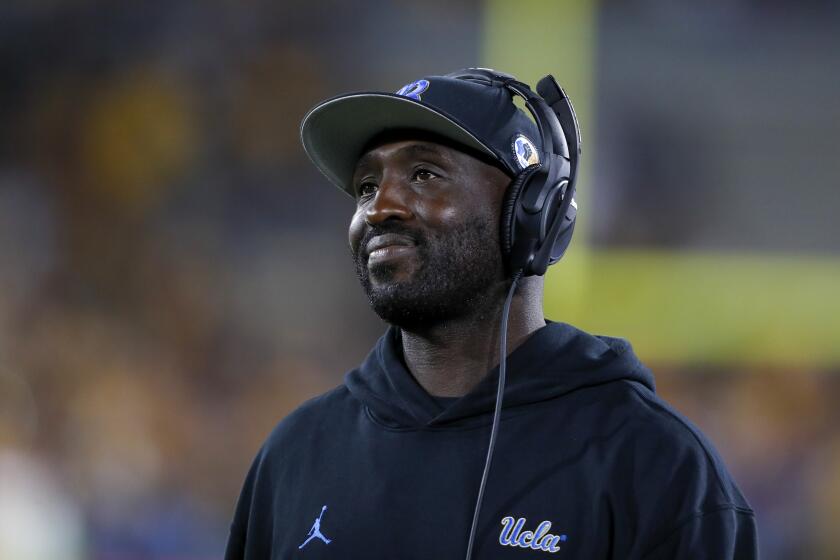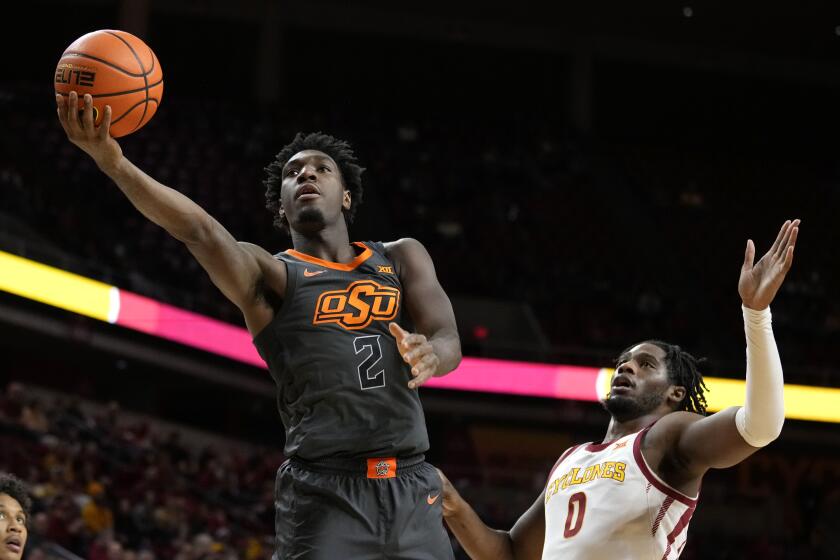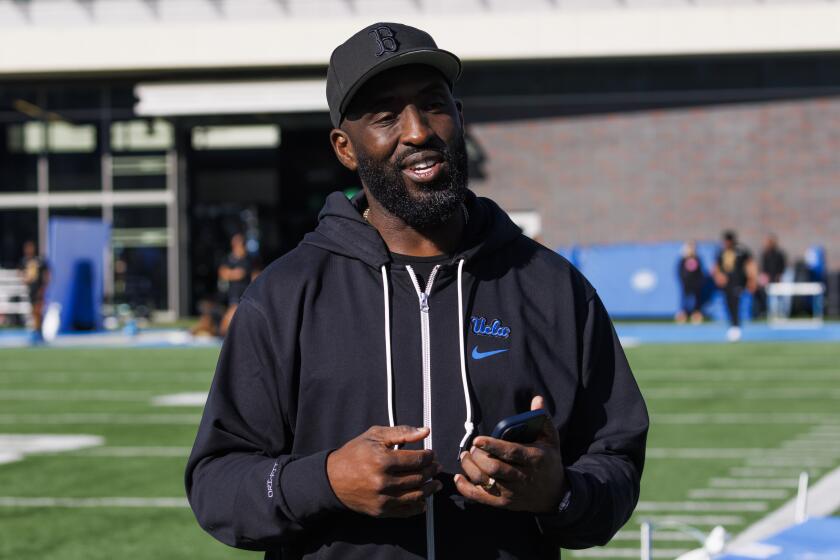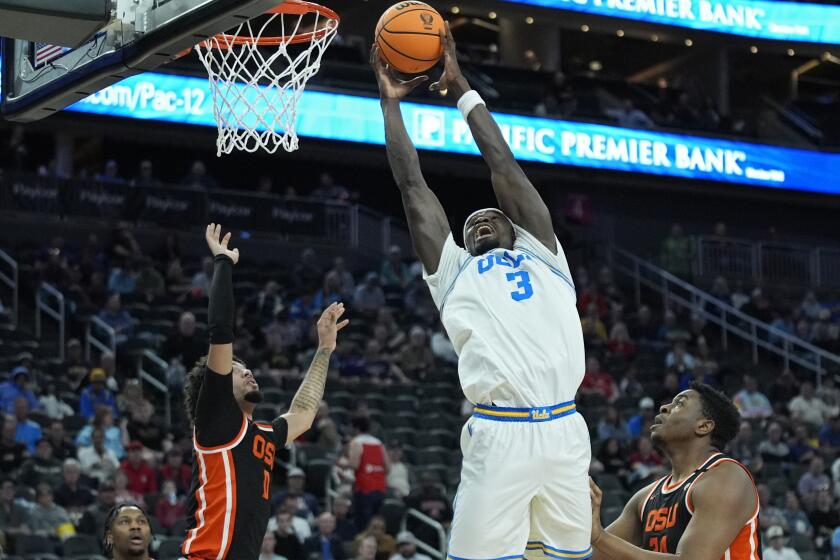Bruins Feeling Good With Home Remedy
Heavy-duty construction equipment sat on stretches of exposed brown dirt. Yards of wires and lengths of pipes were strewn about. A pile of bricks stacked neatly on a pallet had yet to be tapped into.
Those who attend UCLA softball games must weave through a short maze of temporary fencing before heading up a concrete walkway that was poured two days ago. It doesn’t faze Sue Enquist, who has spent the last 30 years here as a player and coach.
It is the scene inside, like the one on a bright Saturday afternoon, that brings a glowing smile to the Bruins’ intense coach: Easton Stadium, home to the two-time defending NCAA champions, rising high with beaming new aluminum and 1,311 green chair-back seats filled to capacity with fervent sun-splashed fans watching a game against rival Arizona.
For college softball’s preeminent program, it is a far cry from the wooden bleachers that needed a coat of paint each year to smooth the splinters.
“It’s still a little overwhelming,” Enquist said as she looked up at the shiny structure. “For 30 years, it had been an eyesore for us.”
In a sense, UCLA softball is being rewarded for its work over the last four decades, going from a sport born out of Title IX to a collegiate powerhouse whose greatest stars would go on to play key roles on the last three gold medal-winning U.S. Olympic teams.
The Bruins won 11 national championships -- a record 10 NCAA titles and one as a member of the Assn. of Intercollegiate Athletics for Women -- even as Enquist and many others saw softball’s popularity spread across the nation and watched many universities respond with increased financial commitments that often included new facilities.
“I think we’ve felt that this was something we’ve wanted to do for Sue for a long time,” said Ken Weiner, an associate athletic director. “This is a program that certainly has been the standard for softball collegiately for a long time. It certainly deserves it.”
The project, which Weiner said cost about $800,000, had been planned for years but became top priority when James Easton, chairman of the company that makes aluminum bats and other athletic equipment, donated the largest portion of the money needed for construction.
Easton provided the financial outlay for the initial work in 1994, when a field was built with enclosed dugouts along with a clubhouse that includes the locker room and coaches’ office.
Enquist said the push came from two other key donors, Arthur Levine and Lauren Leichtman, along with some extensive behind-the-scenes work from former associate athletic director Betsy Stephenson, who now runs the athletic department at Division III Emory in Atlanta.
“Arthur Levine came here [two years ago] and stood on the wood bleachers,” Enquist said. “He looked me in the eye and said ‘We will change this.’ ”
There were the usual snags along the way, none more than the record rainfall last winter that made impossible an official grand opening at the start of the season. Although the stadium is finished, an official entryway has to be built and new landscaping has to be installed.
“The challenge was to get it open by [Friday],” said Kevin Borg, project manager. “We are 80% done, which is pretty doggone good for the time we had to deal with.”
It mattered little to those who watched the 13th-ranked Bruins upset the second-ranked Wildcats, 9-1, Saturday on the strength of two runs and five runs batted in by Emily Zaplatosch. Zaplatosch, a junior catcher, said the gleaming stadium is important to the players even if they didn’t need it in the past to succeed.
“With all the great teams and the tradition that we have, it’s nice to have something like this,” Zaplatosch said. “This is huge. To have this as our home to go with all of that means a lot.
“You go to Fresno State and Arizona and see their big, nice stadiums. We’re right up there with them now.”
Go beyond the scoreboard
Get the latest on L.A.'s teams in the daily Sports Report newsletter.
You may occasionally receive promotional content from the Los Angeles Times.



